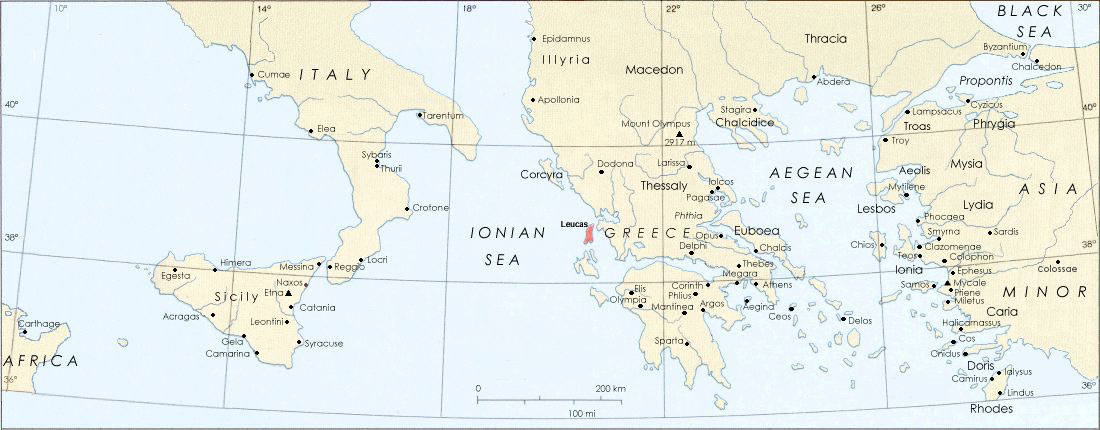The modern Santa Maura. An island in the Ionian Sea, off the western coast of Acarnania, about twenty miles in length and from five to eight miles in breadth. It derived its name from the numerous calcareous hills which cover its surface. It was originally united to the mainland at its northeastern extremity by a narrow isthmus. Homer speaks of it as a peninsula, and mentions its well-fortified town Nericus. It was at that time inhabited by the Teleboans and Leleges. Subsequently the Corinthians under Cypselus, between B.C. 665 and 625, founded a new town called Leucas. They also cut a canal through the isthmus, and thus converted the peninsula into an island. This canal was afterwards filled up by deposits of sand, but was opened again by the Romans. At present the channel is dry in some parts, and has from three to four feet of water in others. During the war between Philip and the Romans, Leucas was the place where the meetings of the Acarnanian League were held. The other towns of the island were Hellomenum and Phara.At the southern extremity of the island, opposite Cephallenia, was the celebrated promontory, variously called Leucas, Leucatas, Leucates, or Leucaté, on which was a temple of Apollo Leucadius. At the annual festival of the god it was the custom to cast down a criminal from this promontory into the sea; birds were attached to him in order to break his fall; and if he reached the sea uninjured, boats were ready to pick him up. This appears to have been an expiatory rite; and it gave rise to the well-known story that lovers leaped from this rock in order to seek relief from the pangs of love. Thus Sappho is said to have leaped down from this rock when in love with Phaon. (Harpers Dictionary of Classical Antiquities, 1898)
